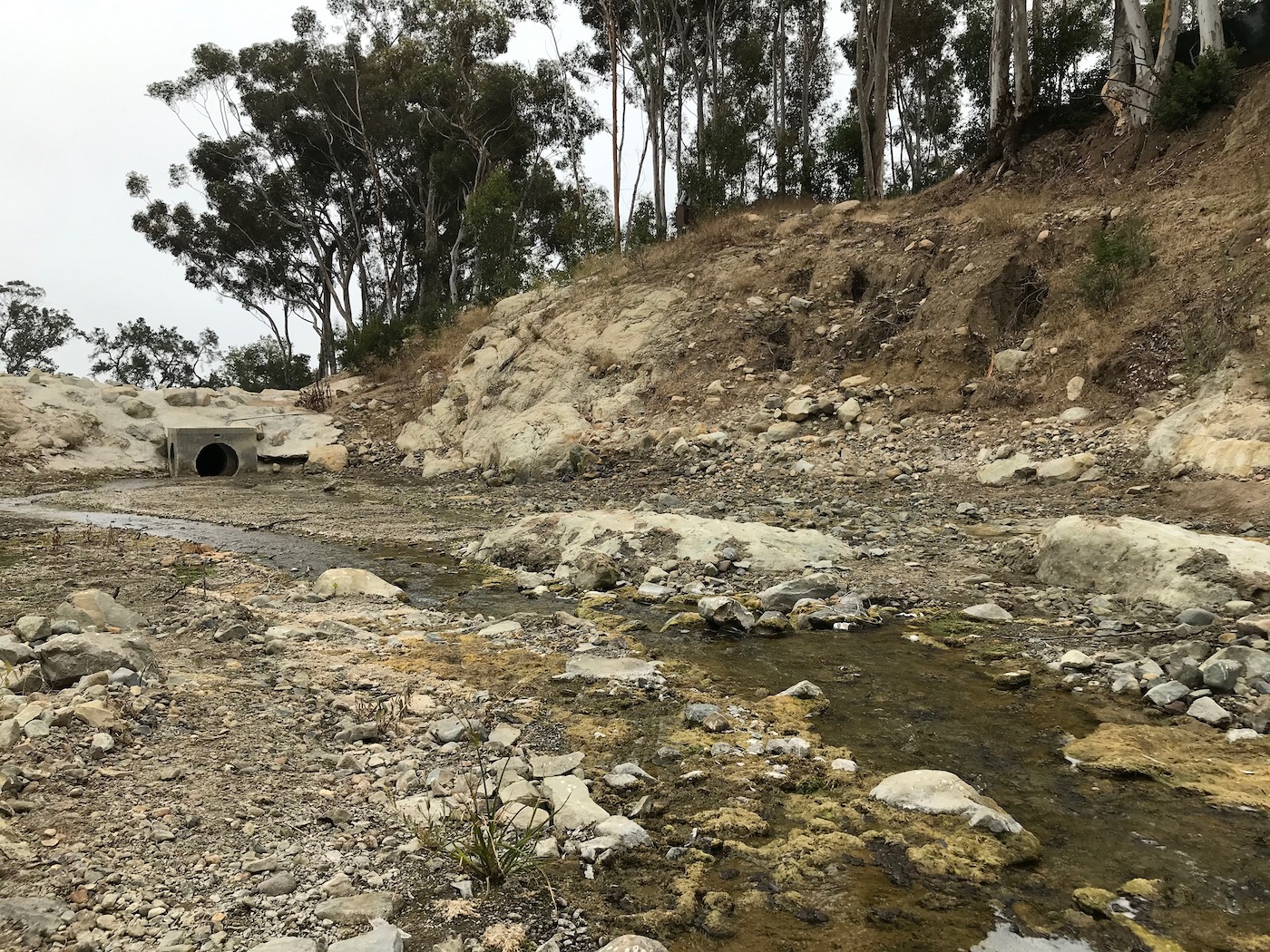Roundup Update

In July, we received and published the following letter, from a concerned Montecito hiker:
Recently, I believe Tuesday June 18th, my friends are I took a hike up San Ysidro Trail. About a half a mile up the trail, we saw workers in the middle of the creekbed spraying. The spraying wasn’t being done directly in the water but on islands surrounded by the creek I approached the workers and asked a man what they were doing. I was told that spraying was being done to stop plants from growing in the creekbed. I asked him if Monsanto’s Roundup was being used. He replied “no” and that the herbicide being used was completely safe.
As I walked back, I stopped and looked in the cab of the truck that had the words “County of Santa Barbara” on it. There were quite a few containers which had labels clearly stating the contents were toxic to humans and animals.
Dogs go to the creekbed quite a bit. Children may play down there. I saw no signs posted that pesticide spraying was going on. What if there were a heavy fog or light rain, and some herbicide was washed into the water? There are pools downstream that people go into. There’s also where San Ysidro Creek empties into the ocean, a place in which people wade barefoot across the creek.
I understand the need to control growth in the creek to prevent debris flows and flooding. But there’s a better way to do it, like manually digging up the plants. The county could recruit volunteers to do this. How many other Montecito creeks is the county planning on spraying? Hikers, be careful that you, your children and your dogs don’t rub against the herbicide treated plants. – Bryan Rosen
After speaking to Montecito Trails Foundation board president Ashlee Mayfield, who oversees the maintenance of the trails and assured us MTF does not use any herbicides, we reached out to Jon Frye, County Flood Control Engineering Manager. Frye confirmed that the crews on site were from the Flood Control District and the area was the San Ysidro Debris Basin, which is about a half mile up from the trailhead on San Ysidro Trail.
The maintenance crews were indeed spraying an herbicide, called Roundup Custom, in order to keep the basin free of vegetation while the watershed recovers from the Thomas Fire and 1/9 Debris Flow. “Once the watershed recovers, the basin floor will be allowed to recolonize with vegetation and a pilot channel will be maintained through the basin,” Frye explained.
Flood Control District Operations and Environmental Manager Maureen Spencer tells us because the basins in Montecito were all below the Thomas Fire and subsequent debris flow, the watersheds are still recovering and maintenance within these basins is focused on keeping them clear so they can provide protection from debris.
“Basins are maintained differently when there isn’t a burned watershed above them,” she explained. “If the watershed above a debris basin is not burned, the District maintains a fifteen-foot-wide pilot channel through the basin and the remaining area of the basin is allowed to become colonized with vegetation. We estimate that it will take three to five years for the burned watershed to recover.”
Spencer went on to say that the crews using the herbicide are licensed and trained to keep all spray to the bare minimum and to avoid flowing water. She said that the spray binds with vegetation and soil particles, and very little spray is used. “It is approved for aquatic use, but that doesn’t mean we spray directly into water. We really try hard to avoid contact with water. If it happens to get into the water, it is in such a small amount that it would be in very small amounts and would be diluted very quickly,” she said. The site is checked monthly but not necessarily sprayed monthly. “The goal is to use as little herbicide as possible and the crew has found that if they spray very small occasional sprouts, they use markedly less herbicide than they would if they allowed the basin to grow for several months and become carpeted with larger plants that would require more herbicide to eliminate and would increase the chances of overspray,” Spencer said.
When spraying the basin, crews are not within 50 feet of the trail, which is the requirement when posting notices, according to Frye.







